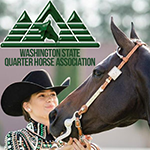Horsemanship is about creating a dance between you and your horse that everyone else watches and thinks, “Wow, how did they do that?” It’s about showing off your partnership. You have to think of it as a dance, and you are your horse’s lead. Tell your equine partner where to go and guide him to his most graceful position correctly. A good lead can make a partner look a lot better than he or she might actually be.
A great horsemanship pattern is all about showing what you’ve got the best you can.
Here are a few strategies I teach my students and how they apply specifically to potential maneuvers in a pattern.
1. Have Plan A and Plan B.
Any time you do a pattern class, the most important thing is to look at the drawing of the pattern and read the words. It’s more than memorizing the horsemanship pattern. You need to make sure you understand it and you know where to execute each element as instructed. It sounds simple, but you’d be surprised how many people don’t take time to do that.
Once you understand the pattern, then you can make your plan to ride it. When I work out how I will ride a pattern, I always have a Plan A and a Plan B. Plan A is what you want to do; Plan B is what you’re going to do if something goes wrong so you can recover and go on. A judge might never know you made a mistake and didn’t do your Plan A, if you just move right into your backup plan.
2. Find and stick to your center.
You have to know the geography of the arena and where the center is, and you have to stick to it. Especially in a pattern where so many things happen in the center.
- Pay attention to banners, marks on the wall, things in and around the arena that can help you establish your center.
- When you walk or jog in, look up and find your center spot on the other end and ride straight to it. Be aware of your side marks in your peripheral vision to time your stop in the center.
- It would be ideal for Plan A to land with your hip on center and then begin your next maneuver. What happens if you stop too soon, ahead of center? You move to Plan B and you make that your new center just like you intended it that way, and you stick to it throughout the pattern.
CLICK HERE to read the rest of the article from AQHA.








